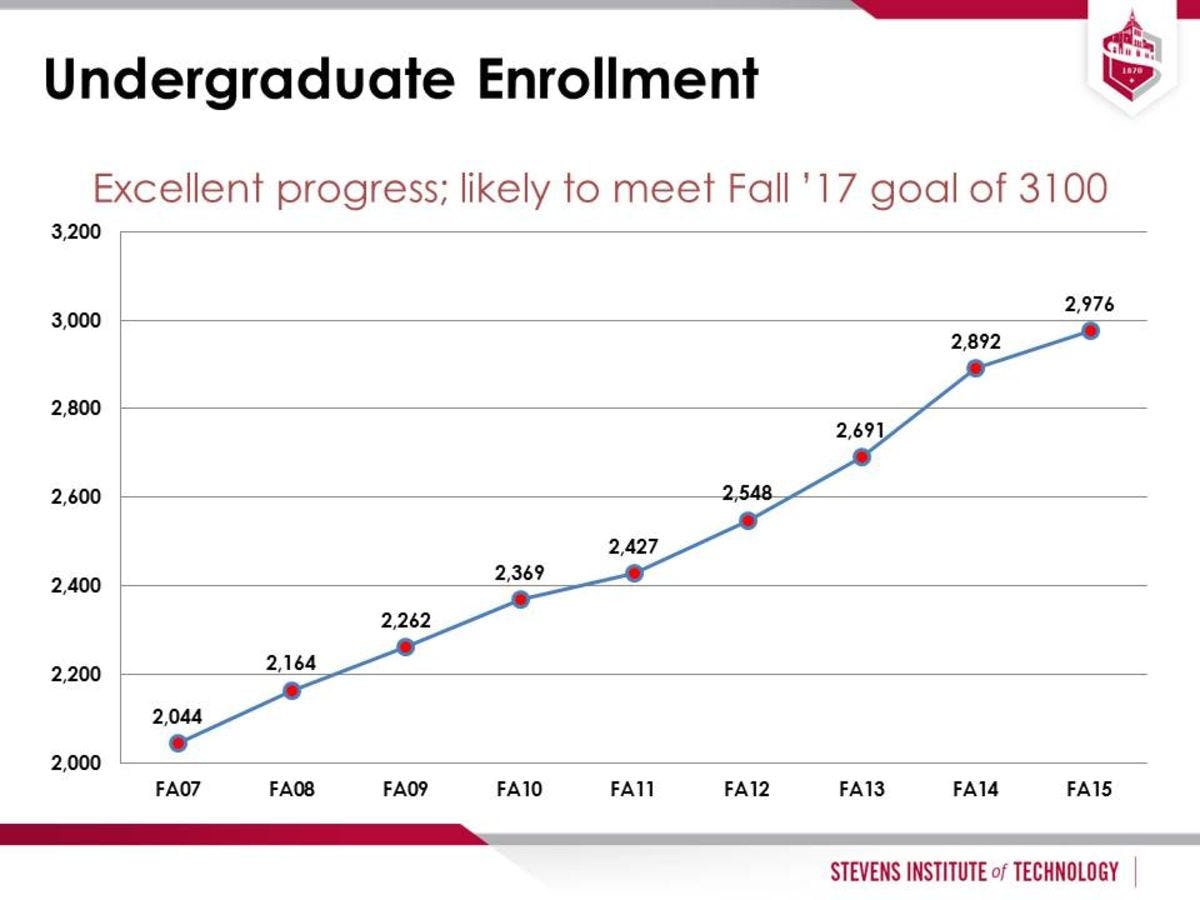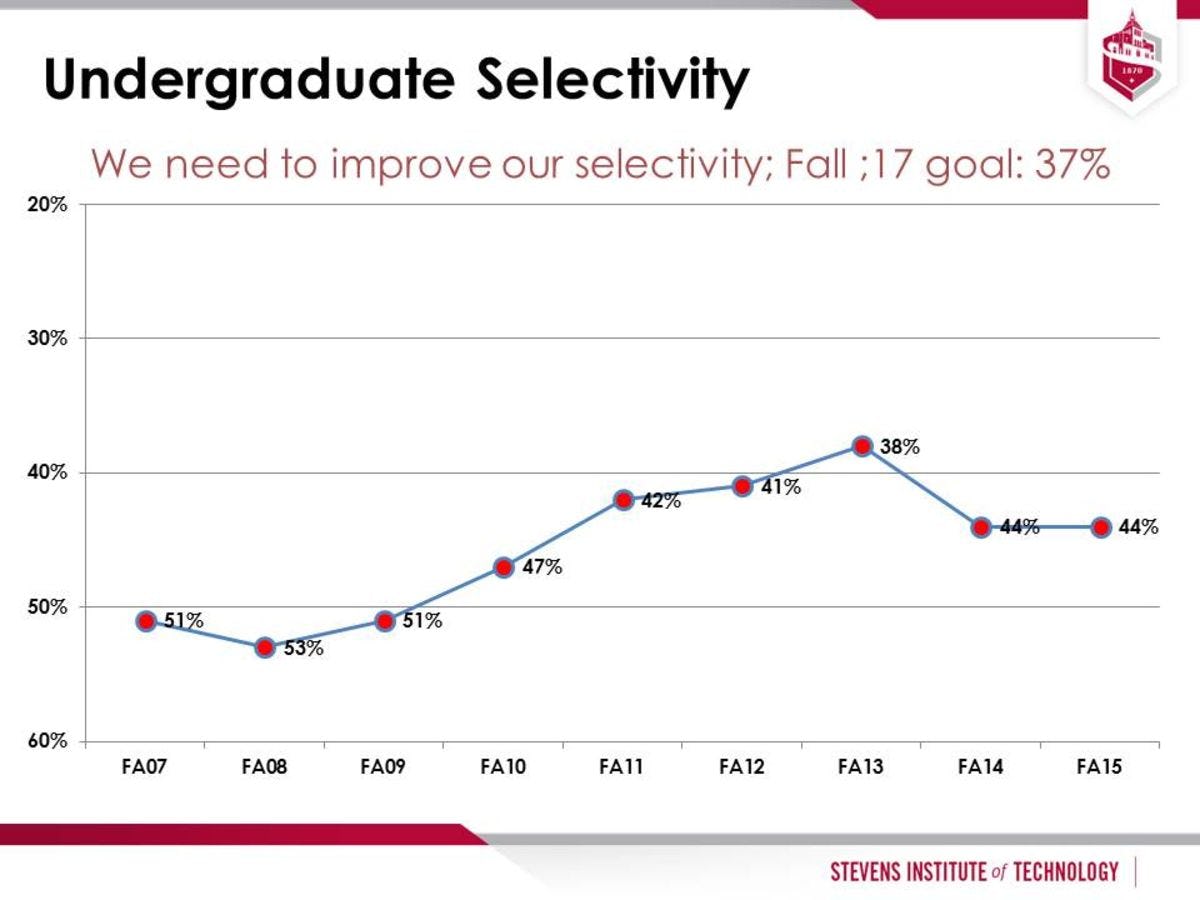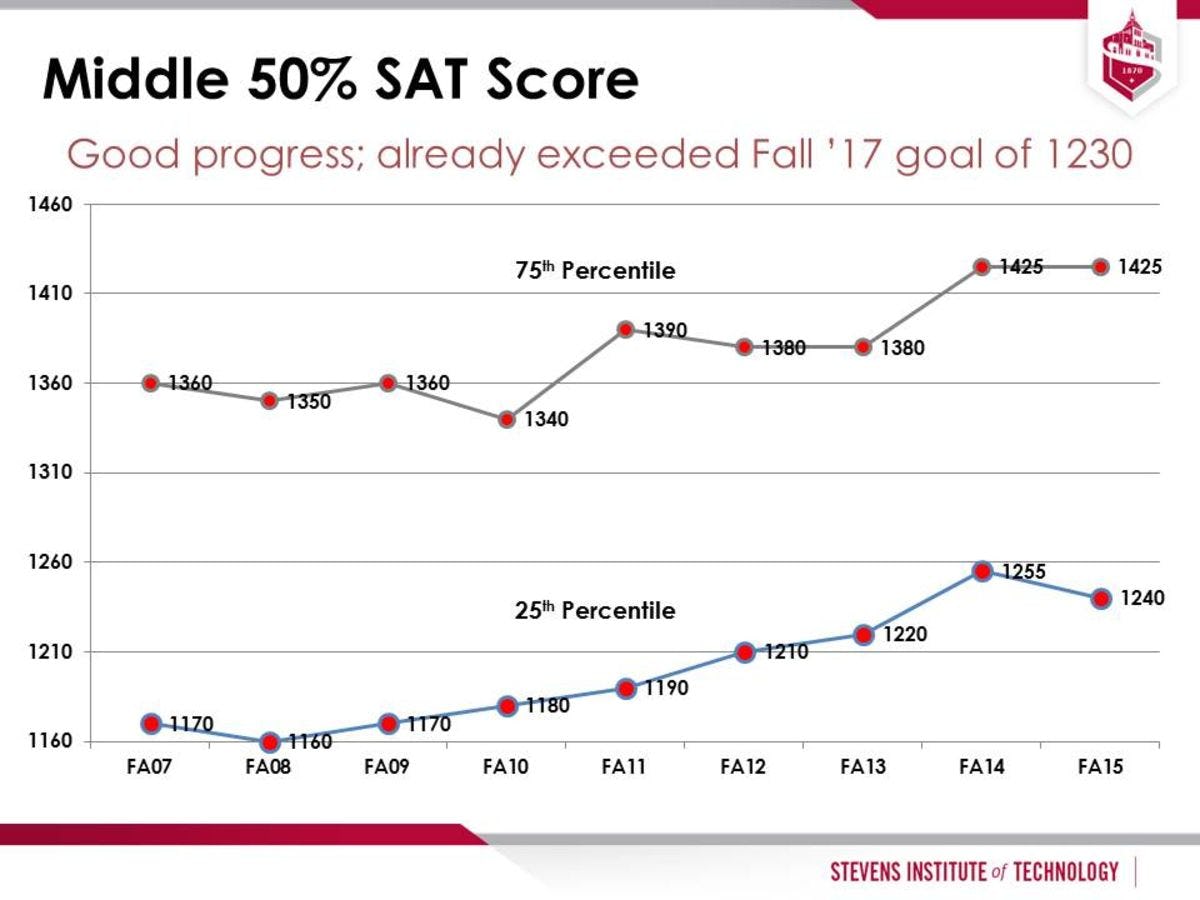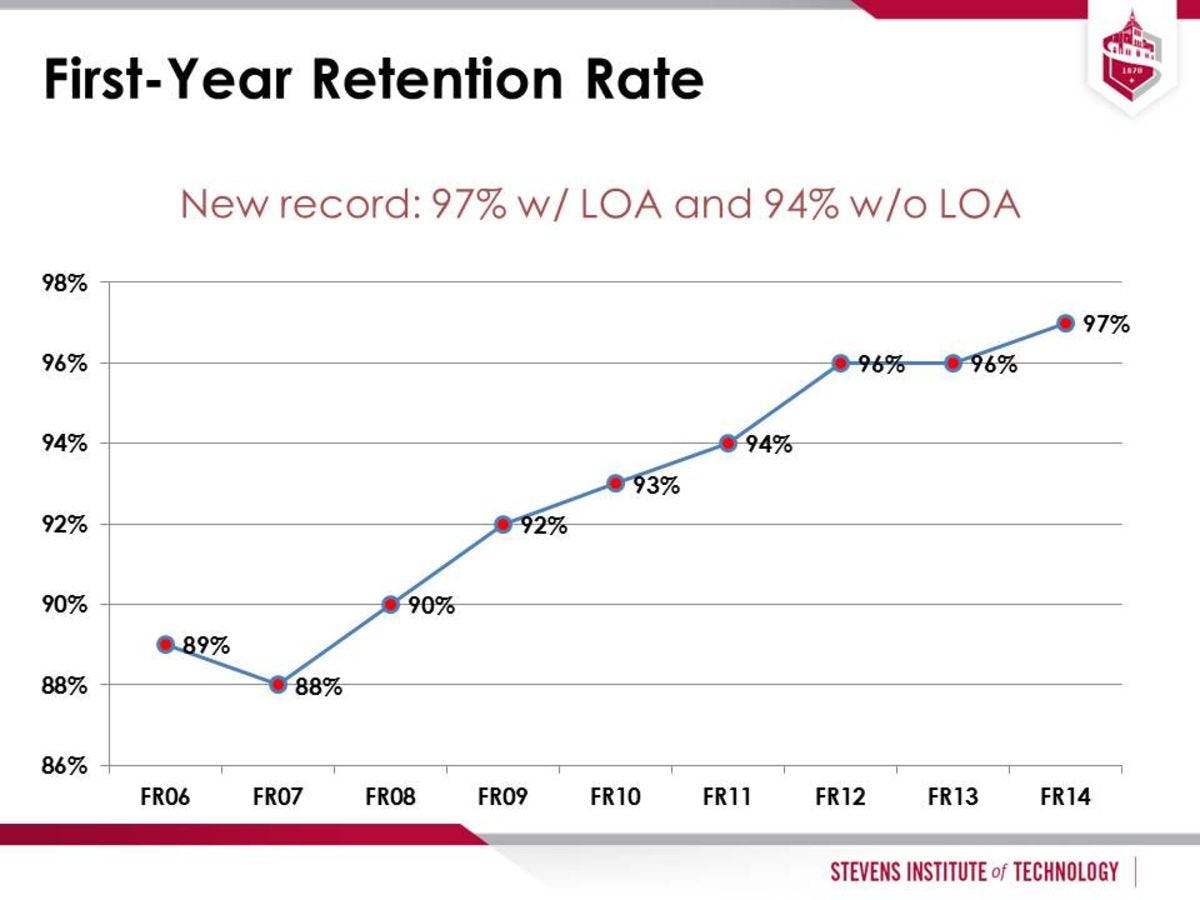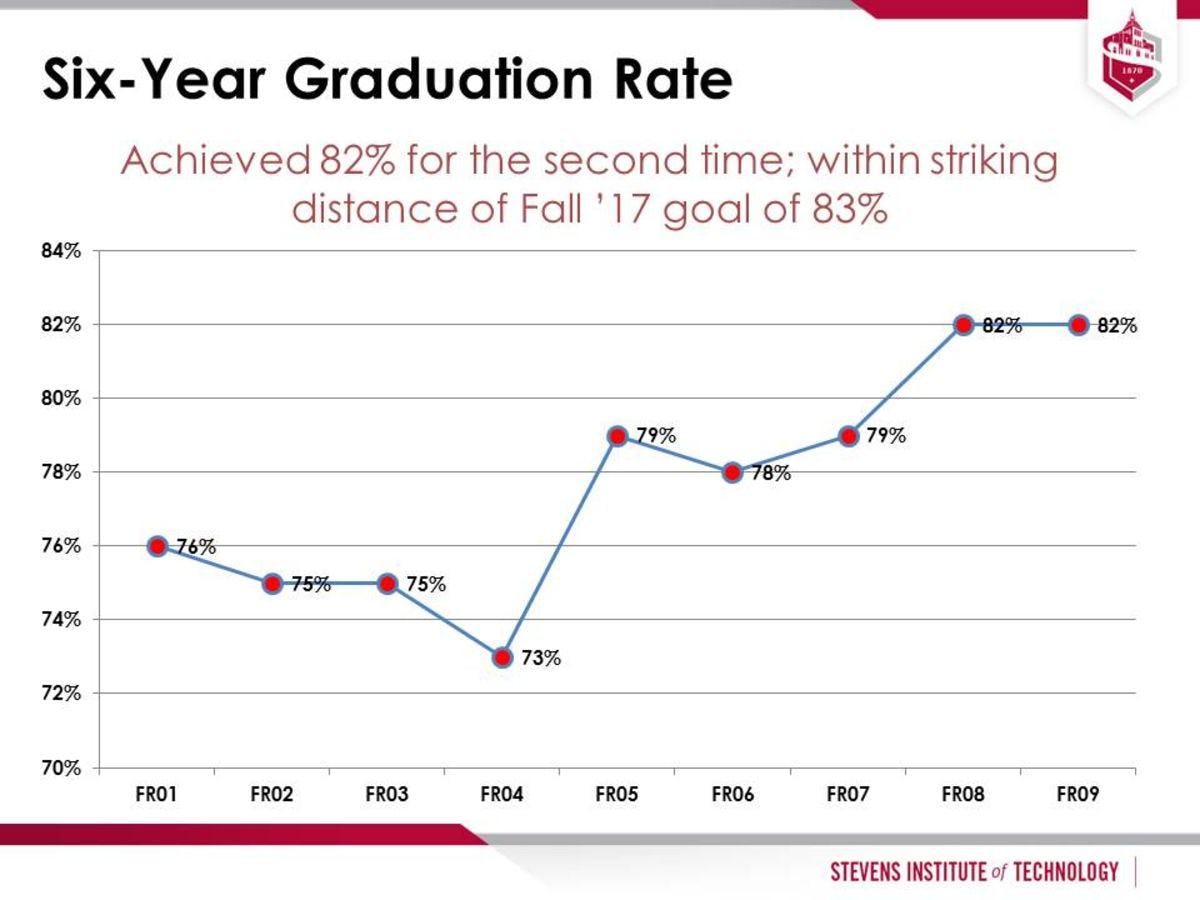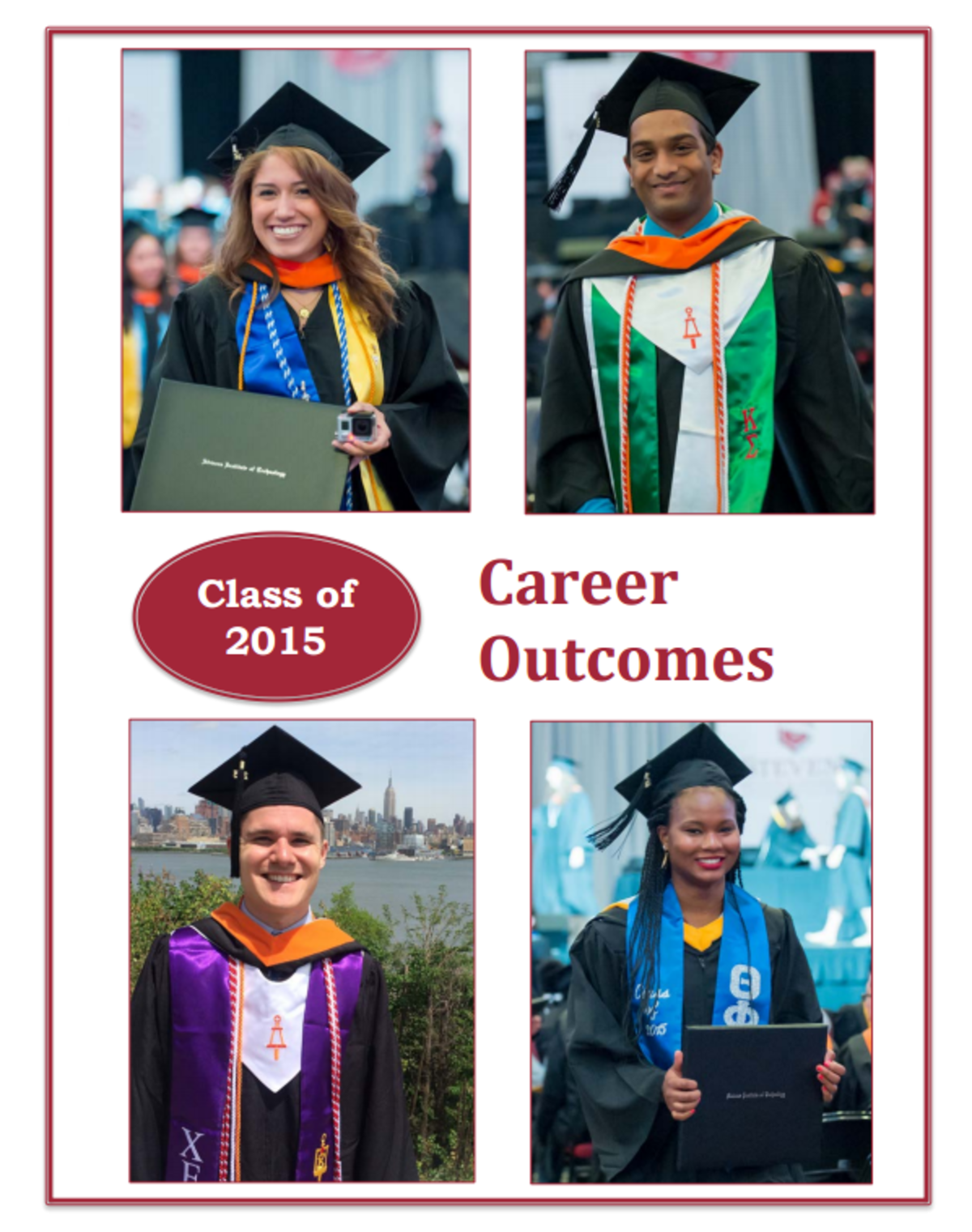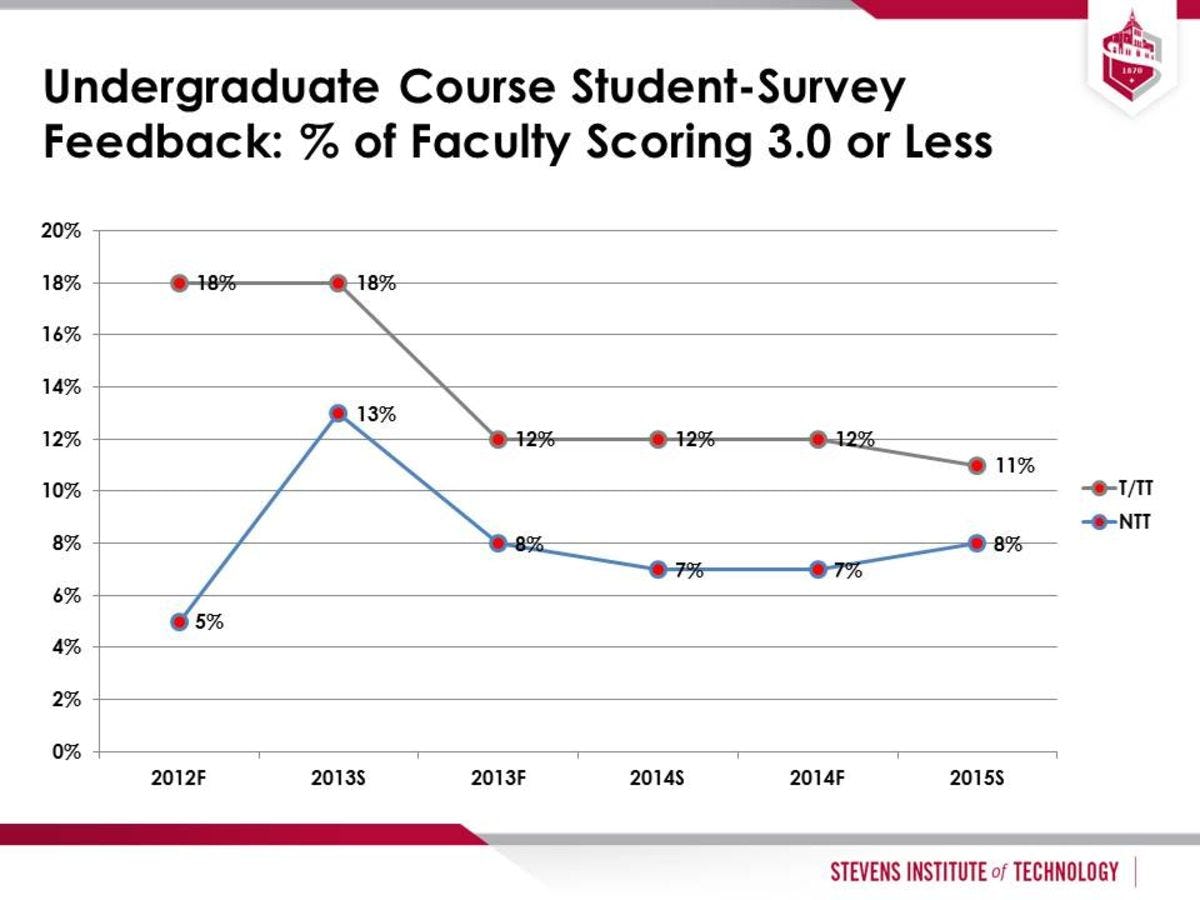Total undergraduate enrollment increased from 2,892 in Fall 2014 to 2,976 in Fall 2015, a 3 percent increase. The academic profile in Fall 2015 also improved by several measures. The freshman-to-sophomore retention rate increased to a new record of 97 percent including “leave of absence” (LOA) students and 94 percent not including LOA. Going forward, this metric will report on the latter method for calculating first-year retention. The 82 percent six-year graduation rate was maintained in Fall 2015. Career placements remained consistently strong with 95 percent of 2015 graduates in full time employment, graduate school or the military six months after graduation.
Goal U1:
Stevens will have an undergraduate student enrollment of approximately 4,000 from a baseline of 2,427 in Fall 2011. The intermediate goal is to have an undergraduate enrollment of approximately 3,100 by 2017.
OWNER: VICE PRESIDENT MARYBETH MURPHY
Fall 2015 undergraduate enrollment was 2,976, exceeding the Fall 2014 final enrollment figure of 2,892 by 84 students, a 3 percent increase. The Fall 2015 undergraduate cohort (freshman, transfer students and LINK program participants) was 742 new students, below the target of 775. Applications increased by 26 percent over Fall 2014 (to 6,540) in parallel with strategic financial aid leveraging which increased net tuition revenue over Fall 2014 despite a smaller cohort of new undergraduate students over the prior year. The percentage of women in the freshman class dipped 2 percentage points, to 28 percent from Fall 2014, and the percentage of out of state students also decreased slightly in the Fall 2015 cohort (39 percent vs. 42 percent in the prior year), while the percentage of international students in the freshman class increased from 2.2 percent in Fall 2014 to 4.5 percent in Fall 2015.
Year 4: Increase enrollment in specific programs (e.g., CAL, School of Business); increase diversity of incoming class, especially gender, ethnic and geographic diversity; optimize and refine financial aid strategy.
Goal U2:
Continue to improve student selectivity and therefore the academic profile of the incoming class. Specifically, the percentage of first-time, full-time undergraduate applicants who are admitted will be 37 percent by 2017 and 33 percent by 2022, from a baseline of 42 percent in 2011. The middle 50 percent SAT score of new freshmen will improve to 1230-1420 by 2017 and 1280-1450 by 2022, from a baseline of 1190-1390 in Fall 2011.
OWNER: VICE PRESIDENT MARYBETH MURPHY
Stevens accepted 44 percent of students who applied for admission, the same percentage as last year. New initiatives, including the Pinnacle Scholars program, contributed to a very strong applicant pool. Overall, the Fall 2015 middle 50 percent SAT score for enrolled students has exceeded the 2017 interim goal, but dipped slightly (1240-1425), compared to last year’s middle 50 percent SAT scores of 1255-1425.
Year 4: Continue to improve the academic profile and selectivity of the incoming class and refine financial aid strategy to ensure increases in academic profile.
Goal U3:
The six-year graduation rate will improve significantly with the goal of achieving at least 83 percent in Fall 2017 (for cohort of Fall 2011) and at least 87 percent in Fall 2022 (for cohort of Fall 2016).
OWNER: PROVOST GEORGE KORFIATIS
The first-year retention rate improved to a new record of 97 percent, including “leave of absence” (LOA) students for freshmen entering in Fall 2014, compared to 96 percent for the prior year and is at 94 percent excluding LOA. Going forward the latter measure (excluding LOA students) will be reported. The six-year graduation rate remained at 82 percent for the Class of 2015.
Year 4: Continue to implement control processes and support mechanisms to improve retention and graduation rates.
Goal U4:
Overhaul the academic schedule and implement curriculum changes with the aim of encouraging and facilitating an array of learning opportunities, including interdisciplinary research and development, critical thinking and problem-solving, community service, K-12 STEM mentoring and international experience (Curriculum ++). In May 2018, 100 percent of undergraduate students will graduate having participated in C++.
OWNER: PROVOST GEORGE KORFIATIS + FACULTY SENATE
An initial baseline inventory has been conducted of current coursework, as well as hands-on, research-based learning content, and sponsored extra-curricular activities which map to the adopted set of C++ KSA (Knowledge, Skills, Abilities) outcomes and which are available to undergraduate students. During AY 14-15, 600 students participated in 764 activities that are encompassed within the C++ concept. These include: innovation, entrepreneurship, entrepreneurship-focused multidisciplinary senior design, study abroad, foreign languages (French and Spanish), and community service.
Year 4: Engage the C++ working committee to build upon the initial baseline inventory and gain input from faculty to identify, propose and develop additional pathways to satisfy the current set of KSAs. Develop a mechanism to monitor the participation of students in the C++ initiative to meet the goal that by May of 2018, 100 percent of undergraduates participate in a C++ program.
Goal U5:
Maintain our stellar placement record for our students and seek to further improve it from our 2011 baseline of 92 percent of students securing post-graduation outcomes as of Nov. 1, 2011.
OWNER: VICE PRESIDENT MARYBETH MURPHY
Ninety-five percent of the Class of 2015 secured outcomes as of November 1, 2015, the same percentage as in the prior year. Efforts of the Career Center staff continue to expand the Stevens employer network resulting in a 14 percent increase in the number of first round interviews conducted through the On-campus Recruitment Program.
In collaboration with the faculty of the Business Intelligence & Analytics Program, an employer networking reception was provided to showcase graduate student projects and allow employers to meet with program faculty and students. Forty-five employer representatives attended to view and discuss student poster board presentations.
A one-credit career seminar, to be offered in Fall 2016, has been created specifically for undergraduate students in The School of Business to support optimal placement outcomes. The course has been presented to the Undergraduate Curriculum Committee and is pending approval.
Year 4: Expand support to students. The Career Center has established dedicated career advising specifically for graduate students and has joined the Graduate Career Consortium, the leading national organization of career advisors specializing in career and professional development for graduate students.
Goal U6:
Stevens will have designed, constructed and staffed a Digital Learning Laboratory (DLL), focusing on the research and practice of technology-enhanced learning across all three schools and CAL (by Fall 2017).
OWNER: PROVOST GEORGE KORFIATIS
Minimal progress was made in Year 3. A number of digital learning research proposals were submitted for ignition grants. One proposal was selected and received an ignition grant.
Year 4: Continue to refine vision of the DLL, recruit and engage faculty in the DLL initiative, and increase research activity.
Goal U7:
A sustained effort consisting of specific initiatives will be undertaken to improve our undergraduate faculty teaching performance and student learning.
OWNER: PROVOST GEORGE KORFIATIS
A formal teaching assessment and feedback process was established. Faculty members who score 3.75 or greater receive congratulatory letters while those scoring below 3.0 receive remediation letters, including a request that they meet with their department head/program director/dean to develop an improvement plan. During the last academic year, 174 congratulatory and 17 remediation letters were issued. The Center for Faculty Advancement has developed remediation resources, which include training modules available online through the Faculty & Staff Professional Development Canvas course-shell.
Other resources for improving teaching now include: “Tip of the Week” (33 sent AY 14-15); faculty professional development modules (300 teaching and learning-related seminars available); syllabus guidelines and template; teaching circle (12 participants in first circle); writing groups (over 25 faculty and Ph.D. students participated in the first event); teaching conference funding (six funded from 19 applicants); and a new Stevens workshop series entitled, “Lessons in Learning” (45 participants in first workshop).
Year 4: Continue efforts launched in Year 3; measure the impact and refine activities based on data.
